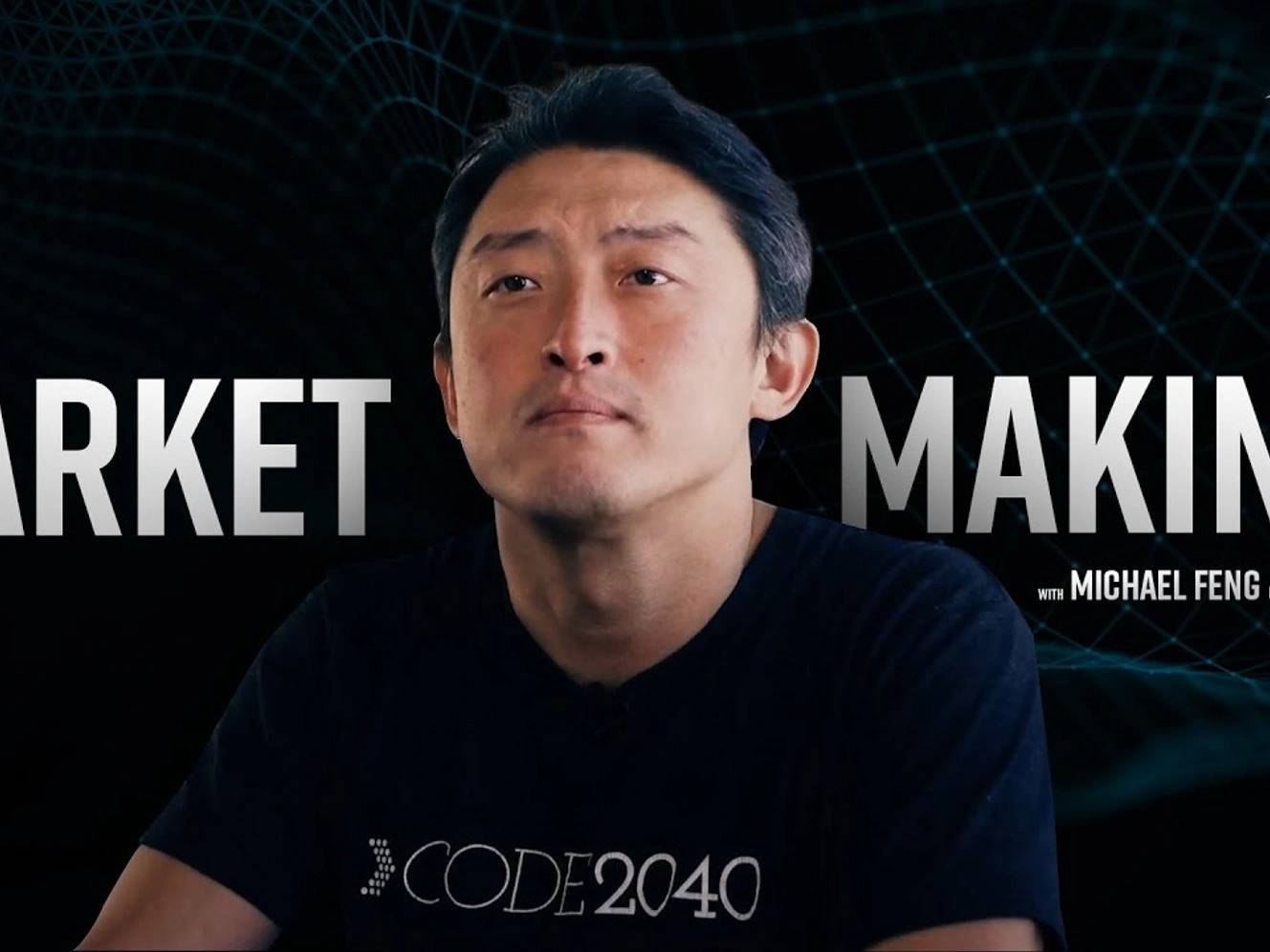위키 구독하기
Share wiki
Bookmark
Michael Feng
Michael Feng
**마이클 펑(Michael Feng)**은 암호화폐(cryptocurrency) 거래 전략 및 봇을 구축하기 위해 만들어진 오픈소스 프레임워크인 허밍봇(Hummingbot)의 공동 설립자이자 이사회 멤버입니다. 그는 또한 허밍봇을 만든 핀테크 소프트웨어 엔지니어링 회사인 코인알파(CoinAlpha)의 공동 설립자이자 이사회 멤버이기도 합니다. [1][2]
어린 시절
마이클 펑은 중국에서 태어났지만 부모님이 미국에서 대학원에 다녔기 때문에 플로리다에서 자랐습니다. [3]
교육
마이클은 1997년부터 2001년까지 펜실베이니아 대학교(University of Pennsylvania)의 헌츠먼 국제학 및 경영 프로그램(Huntsman Program in International Studies and Business)에 등록했습니다. 그는 이곳에서 문학사(Bachelor of Arts)와 이학사(Bachelor of Science) 학위를 받았으며, 6개월간의 해외 연수 프로그램에 참여하여 칭화대학교(Tsinghua University)에서 중국어 문학을 공부했습니다. [3]
2010년, 마이클은 캘리포니아주 팔로알토에 있는 스탠퍼드 대학교(Stanford University)의 대학원 프로그램에 합류했습니다. 그는 2012년 경영과학 및 공학 석사(Master of Science in Management Science and Engineering) 학위를 받았습니다. [3]
경력
금융 경력
2001년 7월부터 2007년 3월까지 마이클은 뉴욕과 홍콩에 있는 시티(Citi)에서 애널리스트/어소시에이트로 근무했습니다. 5년 9개월 동안 그는 주택 및 상업용 모기지에 기반한 CDO의 구조화 및 거래를 전문으로 했습니다. [4]
그 후 2007년 4월부터 2008년 9월까지 마이클은 홍콩에 있는 JP모건(J.P. Morgan)에서 부사장으로 근무했습니다. 그는 JP모건의 아시아 CDO 사업을 설립하기 위해 영입되었지만, 그의 계획은 닥쳐오는 금융 위기로 인해 중단되어 “낙담하고 우울해졌습니다”. [4][5]
마이클 펑의 금융 위기 이후 불만족은 수학과 금융 공학을 사용하여 더 나은 상품을 만들 가능성에 이끌린 그의 원래 금융에 대한 매력에서 비롯되었습니다. 그러나 그는 위기에 기여하고 많은 사람들의 고통을 야기하는 금융 상품을 개발하는 일을 하고 있다는 것을 알게 되었습니다. 새로운 시작을 위해 마이클은 금융 일자리를 그만두고 스탠퍼드 대학교에서 공학 석사 과정에 등록했습니다. 동급생들과의 교류와 컴퓨터 과학 및 기업가 정신 수업에 대한 노출은 금융에서 기술로의 전환을 가능하게 하여 새로운 경력 경로를 시작할 수 있도록 했습니다. [5]
“금융 위기 이후 저는 정말 낙담하고 우울했습니다. 제가 원래 금융에 끌린 것은 수학, 통계 및 금융 공학을 사용하여 이전에 존재했던 것보다 더 최적화된 더 나은 제품을 만드는 것이었지만, 그 반대가 일어났습니다. 저는 지금까지 수백만 명의 사람들에게 집과 일자리를 잃게 만든 제품을 만드는 데 제 경력을 바쳤습니다. 끔찍한 기분이었습니다.”
“저는 스탠퍼드 대학교의 공학 석사 과정에 들어갈 수 있는 행운을 얻었기 때문에 편안한 금융 일자리를 그만두고 다시 학교에 갔습니다. 스탠퍼드 동급생들을 만나고 컴퓨터 과학과 기업가 정신 수업을 듣는 것은 금융에서 기술로의 전환에 큰 도움이 되었습니다.”
기술 경력
마이클은 기술 경력을 시작하면서 2009년 3월부터 2010년 6월까지 홍콩에 있는 포윈즈 캐피털 매니지먼트(FourWinds Capital Management)에서 이사로 일했습니다. 그의 역할은 아시아와 호주 투자자들에게 청정 에너지 사모펀드를 홍보하는 것이었습니다. [4]
이후 마이클은 2012년 11월부터 2015년 7월까지 캘리포니아주 샌프란시스코에 본사를 둔 문서 분석 스타트업인 닥스IQ(doxIQ)의 공동 설립자 겸 CEO가 되었습니다. 닥스IQ는 VentureBeat의 GrowthBeat 2014 스타트업 경연 대회에서 우승하고 PDF 파일에서 표 형식 데이터를 감지하고 추출하는 Docmunch라는 최초의 앱 중 하나를 개발하여 인정을 받았습니다. [4]
닥스IQ가 Nitro, Inc.에 인수된 후, 마이클은 2015년 8월부터 2017년 2월까지 샌프란시스코 베이 지역에 있는 Nitro, Inc.에서 제품 이사직을 맡았습니다. 이 역할에서 그는 Nitro의 제품 관리 팀을 이끌고 주력 제품인 Nitro Pro를 감독했습니다. [4]
닥스IQ와 Nitro에서 근무하는 동안 그는 이더리움(Ethereum) 백서가 발표된 후 블록체인(blockchain) 기술과 암호화폐(cryptocurrencies)에 대한 관심을 빠르게 키웠습니다. 그는 특히 블록체인에서 금융 상품을 구현하는 측면에서 스마트 계약(smart contracts)의 잠재적 사용 사례를 깨달았고, 이는 혁신적이라고 생각하여 웹3(web3) 산업에서 회사를 설립하게 되었습니다. [5]
“2014년 이더리움 백서가 나올 때까지는 정말 주의를 기울이지 않았습니다. 저는 스마트 계약이 파생 상품, 대출 및 기타 모든 금융 상품을 블록체인에 배치할 수 있는 능력을 가지고 있다는 것을 깨달았고, 이는 더 효율적이고 투명하며 개방적인 시스템을 만들 수 있었습니다. 2008년 금융 위기를 직접 경험했기 때문에 붕괴를 악화시킨 요인 중 하나는 아무도 Lehman Brothers에 대한 노출이 실제로 무엇인지 몰랐다는 사실이었습니다.”
블록체인 경력
2017년 8월부터 마이클은 허밍봇(Hummingbot) 생태계를 지원하는 회사인 코인알파(CoinAlpha), Inc.의 이사회 멤버이자 공동 설립자로 일했습니다. 코인알파는 거래소, 토큰 발행자 및 블록체인 프로토콜에 시장 조성 및 엔지니어링 서비스를 제공합니다. [4]
2021년 10월부터 마이클은 허밍봇 재단(Hummingbot Foundation)의 이사회 멤버로 전임 근무하고 있습니다. 이 비영리 단체는 오픈소스 허밍봇 코드 저장소를 유지 관리하고 고주파 거래의 민주화라는 사명으로 HBOT 토큰 거버넌스 시스템을 감독합니다. [4]
잘못된 내용이 있나요?
